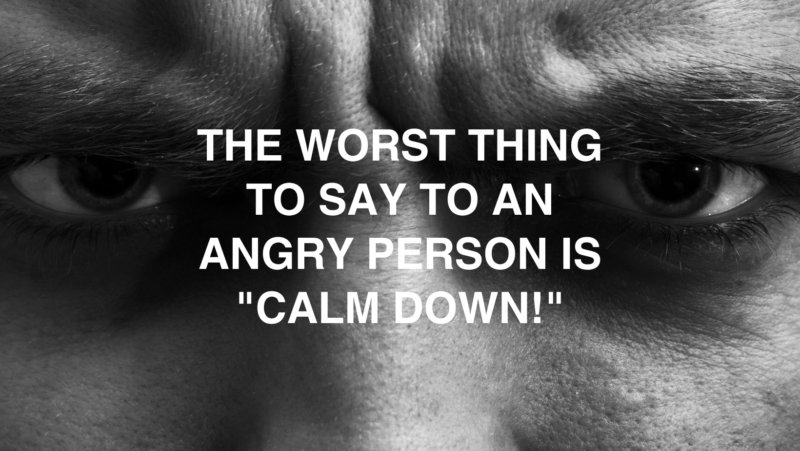Blog Short #149: How to Apologize the Right Way

Photo by Evgeniia Primavera, Courtesy of Shutterstock
Saying you’re sorry for something you’ve done that caused a problem or pain for someone else is healing for both you and the other person.
It’s also humbling in a good way and reminds us we’re not perfect while highlighting empathy and genuine concern for how we affect each other.
Heartfelt apologies make us better people and foster good connections between us, which is good for our survival and helps us thrive.
Today, I’m going over the steps for making an effective apology that helps repair and move on from mistakes.
Quick note: We’re only referring to situations where you feel you’ve done something to apologize for.
Let’s dive in.
Four Main Components of an Apology
In general, most writers and researchers include the following elements/steps for effective apologies:
- Saying you’re sorry and expressing your remorse for what you did
- Taking responsibility for it
- Making amends or reparations
- Vowing that it won’t happen again
All of these are necessary elements, but I like the 6-step stratagem offered by Marjorie Ingall and Susan McCarthy in their book Sorry, Sorry, Sorry. It includes all those elements but spells them out a little more so it’s easier to remember. I’ll review them briefly, but if you want to know more, read the book. It’s excellent!
The 6-Step Strategy
Step 1: Say you’re sorry.
Say the actual words, “I’m sorry” or “I apologize.”
Saying things like “I regret that you were hurt” or “It wasn’t my intention to distress you” are vague and subtly questions whether you did anything wrong. Saying “I’m sorry” means you’re owning the mistake and taking responsibility for it.
Make it simple and direct, and use “I” statements. Avoid making “you” statements.
Step 2: Be specific about what you’re apologizing for.
Name what you did; the specific act or behavior that caused the harm and for which you’re sorry.
Let’s say you show up late for dinner at a restaurant, and your partner has to wait an extra 15 minutes. You rush in and say,
“I’m sorry you had to wait for me!”
That sounds okay, right? But it’s focusing on what happened to the other person instead of what you did. A better statement would be,
“I’m sorry I didn’t get myself here on time and left you waiting.”
The second statement is more powerful because it focuses on exactly what you did that you’re apologizing for. “You had to wait” is easier to say than “I made you have to wait,” but the difference is significant. By emphasizing your behavior, you’re taking responsibility.
Step 3: Show you understand the impact of what you did.
Now that you’ve made it clear you know what you did that’s upsetting to the other person, make sure you state the impact of it.
“I’m late and made you wait, and I’m sure it might have been uncomfortable sitting here alone. You probably felt unimportant or forgotten.”
Sometimes, it’s best to let them tell you how they feel and how they were impacted by what you did before apologizing. This is especially true when the incident is serious or has more significant consequences.
In those cases, invite them to tell you how they were affected and listen attentively. Mirror back what you hear with empathy and show your remorse.
However, make sure the attention stays on the person who was hurt. Don’t get so wrapped up in expressing your remorse that the conversation shifts more to your feelings, and the person offended ends up soothing you.
Step 4: Explain if necessary.
Sometimes, people want an explanation, and it helps to provide one.
For example, if you were late for dinner because you had a flat tire and had to change it before proceeding, that explanation would help soothe any ruffled feelings because it makes sense and couldn’t be helped.
The trick is to not use explanations as excuses. If instead of the flat tire, you were late because you didn’t start getting ready to leave the house soon enough, saying something like “I lost track of time” becomes an excuse and cancels out the apology. You’re saying, “I’m sorry but . . . .” which isn’t being sorry.
Give explanations when they’ll help, but always own up to your responsibility and don’t make excuses.
“I didn’t start getting ready soon enough, but that’s no excuse, and by doing that, I left you sitting here alone waiting for me. I’m very sorry I put you in that position.”
Step 5: Say why it won’t happen again.
Continuing our scenario, you could add to that last statement,
“It won’t happen again. I’ll add an extra 30 minutes to my schedule for getting ready because I know I tend to estimate on the light side. That way, I’ll always be ready on time.”
What changes are you making that will change the outcomes? Spell them out, and be sure you can follow through.
Step 6: Make amends.
What can you do to repair the damage?
Maybe promising not to repeat the behavior and holding up to that is enough. In other cases, it might be something more specific, like if you broke something, you could replace it. If you regularly lose your temper with your partner, you could schedule an appointment for counseling to work on anger issues. For our guy who was late to dinner, he could set up another dinner date and make it memorable (and show up on time.)
The most important thing to do is to change the behavior that caused the problem initially.
Saying you’re sorry is useless if you don’t do something to prevent it from happening again.
What’s the best method for apologizing?
There are many ways to do it: face-to-face, by text or email, or by writing a letter. The method will depend on:
- The seriousness of the offense
- The complexity of the issue and the need for a longer and more detailed apology
- Your comfort with making the apology
- How you think the other person might respond
If you aren’t good with words and need to review what you want to say before delivering it, you may prefer writing or emailing. A written letter can be very effective for a more heartfelt apology.
Email is helpful when you need emotional space to express your true feelings and thoughts.
A text is fine for something that isn’t serious but not for something with more extensive repercussions.
Face-to-face is best for intimate relationships but may be difficult when you think the offended person won’t be receptive to what you have to say.
Choose what you think will be most effective for the situation.
The Timing
Not all apologies should be made right away. For more serious infractions, or when the issue is complex, take the time to think it through before apologizing.
Get clear on what you think you did that you need to apologize for, and distinguish between your part and the other person’s part if the situation involved mistakes on both sides. By doing that, your apology will be more effective.
It also helps to allow the other person time to think over the situation before talking about it.
Avoid trapping the other person.
Don’t apologize in a space where the other person can’t walk away if they want to, like in a car while driving or in an enclosed area where you’re blocking the entryway.
Give people the space and option to move away.
Sometimes, people need time before responding or can’t accept your apology. That doesn’t mean you shouldn’t make it. You should because it’s the right thing to do, and you need to make amends. However, if it’s not accepted, you’ll at least know you did your best, and you can make peace with that. Or try again later.
That’s all for today.
Have a great week!
All my best,
Barbara
FOOTNOTES
Frantz, C. & Bennigson, C. (2005). Better late than early: The influence of timing on apology effectiveness. Journal of Experimental Social Psychology. 41. 201-207. https://doi.org/10.1016/j.jesp.2004.07.007
Ingall, M. & McCarthy, S. (2023). Sorry, Sorry, Sorry: The Case for Good Apologies. Gallery Books.
Scher, S. J. & Darley, J. M. (1997). How effective are the things people say to apologize? Effects of the realization of the apology speech act. Faculty Research and Creative Activity. 26. http://thekeep.eiu.edu/psych_fac/26
Schumann, K., & Dweck, C. S. (2014). Who accepts responsibility for their transgressions? Personality and Social Psychology Bulletin, 40(12), 1598–1610. https://doi.org/10.1177/0146167214552789








